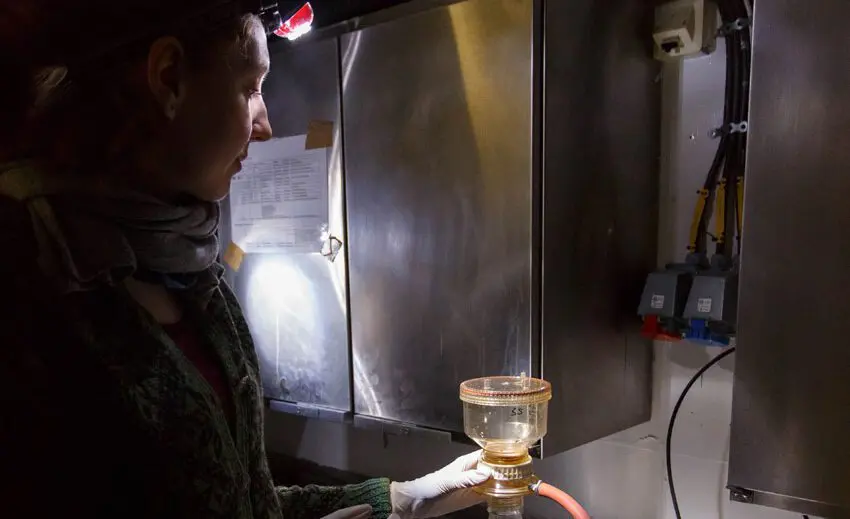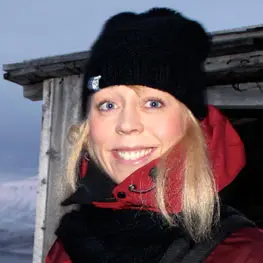Zooplankton migration patterns in the Polar night

PhD student Julie Cornelius Grenvald filters water samples in the "darkness" onboard the coast guard ship KV Svalbard, Photo: Håkon Kjøllmoen/Norwegian Coast Guard.
Top image: PhD candidate Julie Cornelius Grenvald filters water samples in the “darkness” onboard KV Svalbard. Photo: Håkon Kjøllmoen/Norwegian Coast Guard.
Why do zooplankton migrate up and down the water column during Arctic dark season when there is apparently constant darkness? PhD candidate Julie Cornelius Grenvald has examined the Diel Vertical Migration (DVM) of zooplankton during the polar night and reveals several and complex migration patterns. Grenvald will defend her thesis on 9 May at the University of Tromsø.
5 May 2017
Press release from the University Centre in Svalbard (UNIS) and University of Tromsø
Recent Arctic studies contradict the long-held paradigm of winter quiescence and document activity levels in the marine food web even during the darkest months of winter. A phenomenon that has attained considerable attention is patterns of Diel Vertical Migration (DVM) of zooplankton during the polar night. Why do organisms migrate in a seemingly constant dark environment?
Krill dominant species behind migratory patterns
Julie Cornelius Grenvald’s PhD thesis is aimed at examining the general patterns on DVM during the polar night in Svalbard waters, with a main aim of identifying which species are in fact migrating and why they conduct these energetically costly migrations. The results show that polar night DVM is a complex phenomenon, and involves several migration patterns.
Zooplankton net sampling, in parallel with acoustics, revealed that krill were dominant species behind migratory patterns. Molecular and electrophysiological experiments showed that ambient light levels rather than endogenous genetic control governed winter migration patterns.

Dissertation
Julie Cornelius Grenvald will defend her PhD thesis entitled “Understanding winter patterns of zooplankton diel vertical migration (DVM) in a high Arctic fjord (Kongsfjorden, Svalbard)” at the University of Tromsø on Tuesday at 12:15.
She will give a public trial lecture, entitled: “Shedding light on Arctic zooplankton behavior” the same day at 10:15.
Both lectures take place in Store auditorium (E-101), NFH building.
Supervisors have been Professor Jørgen Berge from UiT/UNIS (main supervisor), and co-supervisors have been associate professor Tove Gabrielsen (UNIS), senior scientist Paul Renaud (Akvaplan-niva/UNIS) and Dr. Finlo Cottier (Scottish Association for Marine Science).